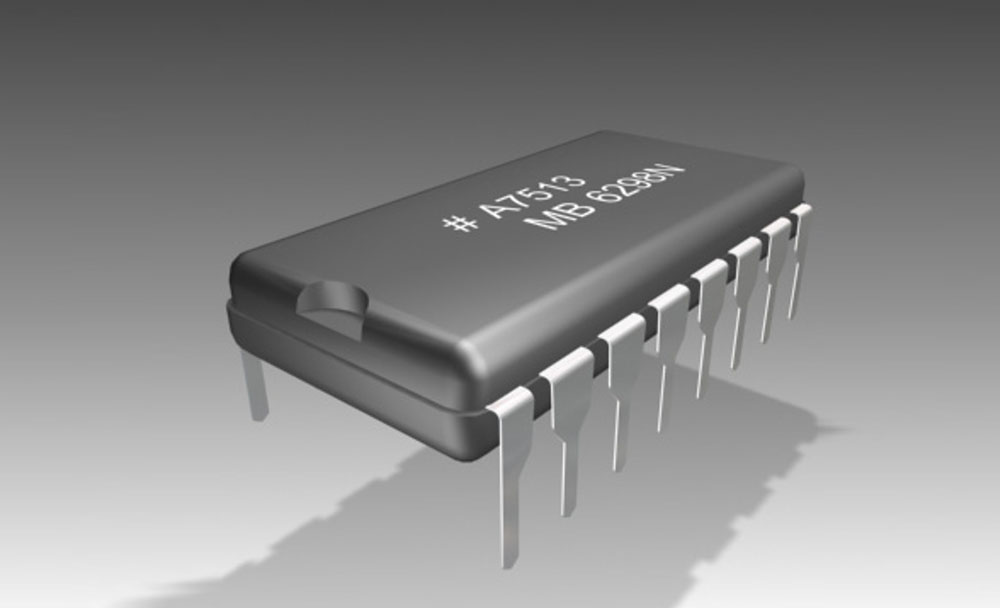
The ATMEGA8A-AU is an 8-bit microcontroller with an internal 16 KB flash program memory, 256 bytes of SRAM and a 16-pin expansion port. It has an operating frequency of 20 MHz and there are 14 general purpose I/Os with 11 dedicated pins for digital functions. The board is powered from the system reset pin and features a secure internal Oscillator (COS) to ensure that no unauthorized user can access the RAM or CPU if Power Supply is removed. The ATMEGA8A-AU provides high performance through its execution unit, which includes a Harvard Architecture parallel processing core, as well as its flexible program memory interface, which allows simultaneous implementation of application software in both Flash Memory and SRAM. It also has hardware acceleration logic that interfaces with the ALU directly via 64-bit data buses to accelerate common math operations such as added arithmetic, relational and logical calculations.
Key Features
The ATMEGA8A-AU is an 8-bit microcontroller with an internal 16 KB flash program memory, 256 bytes of SRAM and a 16-pin expansion port. It has an operating frequency of 20 MHz and there are 14 general purpose I/Os with 11 dedicated pins for digital functions. The board is powered from the system reset pin and features a secure internal Oscillator (COS) to ensure that no unauthorized user can access the RAM or CPU if Power Supply is removed.
The ATMEGA8A-AU provides high performance through its execution unit, which includes a Harvard Architecture parallel processing core, as well as its flexible program memory interface, which allows simultaneous implementation of application software in both Flash Memory and SRAM. It also has hardware acceleration logic that interfaces with the ALU directly via 64-bit data buses to accelerate common math operations such as added arithmetic, relational and logical calculations.
8-bit Harvard Microcontroller with 16 KB flash program memory and 256 bytes of SRAM
The ATMEGA8A-AU is an 8-bit microcontroller with an internal 16 KB flash program memory, 256 bytes of SRAM and a 16-pin expansion port. It has an operating frequency of 20 MHz and there are 14 general purpose I/Os with 11 dedicated pins for digital functions. The board is powered from the system reset pin and features a secure internal Oscillator (COS) to ensure that no unauthorized user can access the RAM or CPU if Power Supply is removed. The ATMEGA8A-AU provides high performance through its execution unit, which includes a Harvard Architecture parallel processing core, as well as its flexible program memory interface, which allows simultaneous implementation of application software in both Flash Memory and SRAM. It also has hardware acceleration logic that interfaces with the ALU directly via 64-bit data buses to accelerate common math operations such as added arithmetic, relational and logical calculations.
Secure internal Oscillator (COS) to ensure that no unauthorized user can access the RAM or CPU if Power Supply is removed.
The COS provides an additional level of security to the M8 by ensuring that no user can access the CPU if the power supply is removed. The COS oscillator is permanently disabled when power is removed. Once the power supply is applied, the COS is enabled and the CPU starts running from the internal RAM.
This feature ensures that a hacker cannot use a low voltage power supply as an unauthorized entry point to your device.
Hardware acceleration logic supports common math operations such as arithmetic, relational and logic operations. This core logic has a dedicated processing pipeline for the ALU to increase the throughput.
The M8 core is optimized to run the common arithmetic and logic operations almost in hardware. This means that the M8 core can perform the operations relying on the data directly from the 64-bit ALU interface. This feature increases the throughput of the applications and lowers the execution time.
High performance through its execution unit, which includes a Harvard Architecture parallel processing core. This processor unit executes instructions in parallel across all general purpose I/Os in less than single clock cycle.
A Harvard Architecture microcontroller is based on a pipeline concept, which means that the entire data processing pipeline is contained in the processor unit. The pipeline concept allows high performance because the microcontroller is a parallel machine.
The execution unit of the M8 includes a Harvard Architecture parallel processing core. This processor unit executes instructions in parallel across all general purpose I/Os in less than single clock cycle. The execution unit of the M8 is a powerful CPU that allows you to execute complex software efficiently and run your applications faster.
Flexible program memory interface accommodates simultaneous implementation of application software in both Flash Memory and SRAM. This feature allows continuous data flow between program memory and SRAM to achieve high degree of hardware utilization and minimize the overall device code size.
The M8 core program memory interface supports simultaneous implementation of application software in both Flash Memory and SRAM. This feature allows continuous data flow between program memory and SRAM to achieve high degree of hardware utilization and minimize the overall device code size. The hardware design of this interface also allows easy expansion of the program memory by connecting external devices to the 16-bit data bus.
On board Real Time Clock (RTC) provides accurate timekeeping during Program & Data Memories are kept off when not required. RTC is powered by an on-board lithium cell providing long service life with minimum maintenance requirements.





 2022-11-24
2022-11-24 


